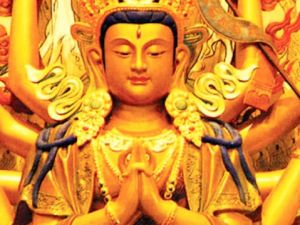Karma marga
Karma marga is one of three paths to liberation (moksha) in Hinduism, according to the Bhagavad Gita. Also called karma yoga, it is the path of action without selfish motives. Someone following this path lives in harmony with his/her ethical duty, or dharma, and may tend to be socially active.
Doing good deeds is key to following this path, but the motivation is not any type of reward. This yogi does good works simply because it is right. The other two paths are jnana marga (path of knowledge) and bhakti marga (path of devotion).
Yogapedia explains Karma Marga
The different paths to liberation reflect the different talents and personalities of Hindus. Karma marga is for those who seek salvation through day-to-day tasks while living an ordinary life working and raising a family.
Marga is a Sanskrit word meaning “path,” “route” or “passage.” Karma is often translated as “action” or “work,” but the concept doesn't translate easily into English. The concept applies to action on several levels that results in positive or negative consequences for this life or the next life. The Hindu following karma marga can expect a freedom from suffering in the next life or even liberation – that is, an end to the cycle of reincarnation.
During These Times of Stress and Uncertainty Your Doshas May Be Unbalanced.
To help you bring attention to your doshas and to identify what your predominant dosha is, we created the following quiz.
Try not to stress over every question, but simply answer based off your intuition. After all, you know yourself better than anyone else.
